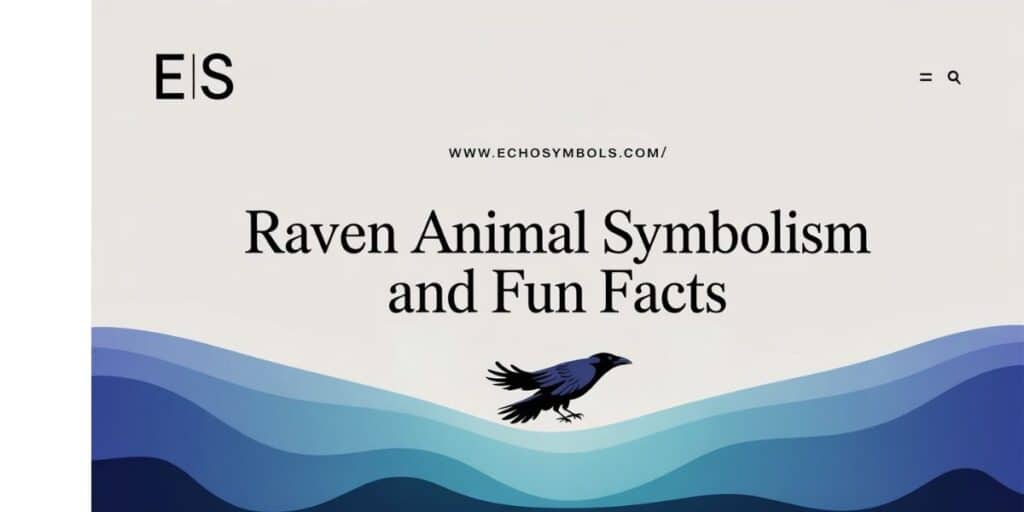To tell the mystery and intelligence of these amazing birds, it is also often known as Raven Animal Symbolism and Fun Facts.
Fully enrapturing mystery, mythology, folklore, religious beliefs, and symbolism as wisdom transformation and cunning, these birds have continued to be intrigued even for hundreds of centuries because of their remarkable perking intelligence, challenging problem-solving ability, and distinctive vocal talents.
They are in full-world mythology, from Native American mythology to Norse mythology. Their potential to imitate human language and face recalls makes them simply outstanding.
Surprising and Spooky Raven Facts
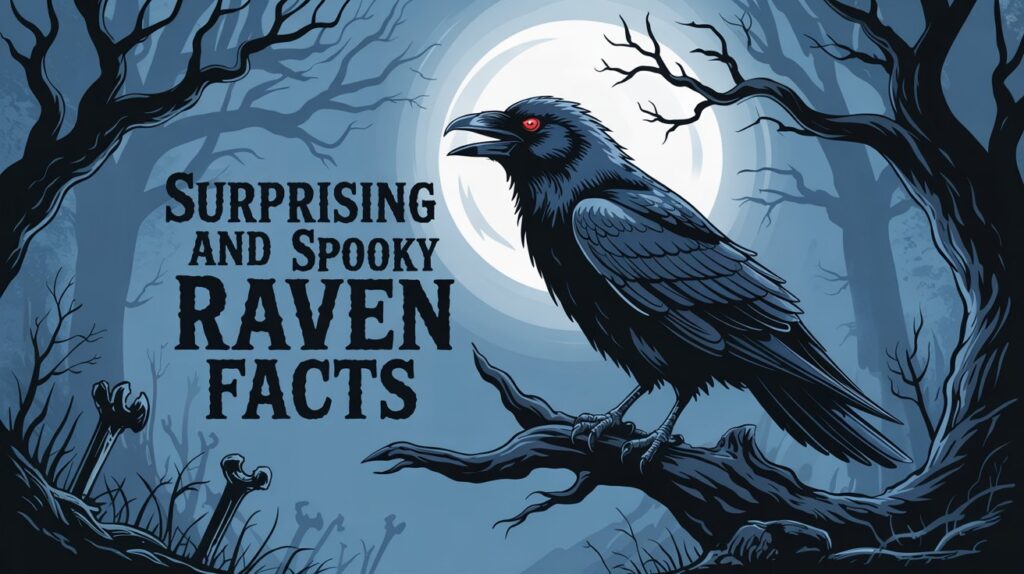
The common link between ravens and death is supernatural. Raven’s feathers and croaks make it seem spooky. They represent an omen or a ghost in horror fiction. Hundreds of dead bodies lay on ancient battlefields, and these sites were once said to be avian buffet spots.
Many say that seeing a raven makes one subject to bad luck. Others believe that they serve as gatekeepers instead of omens of death. Though perhaps spooky, ravens alongside crows are some of the most intelligent birds in the world.
Cleverness of the Ravens
Among the most intelligent birds, there are a few animals called ravens. They use tools to get food, a skill that hardly a few birds possess. The researchers indicate that they plan ahead for their future, just like humans do. They can even deceive other animals to steal their food.
Some scientists compare this type of intelligence to that of a seven-year-old child. They are great problem solvers and also understand the cause-effect relationship. This trait of theirs helps them to survive under unfavorable conditions.
The They Are Ravens: The Superior Predators
They are more than mere scavengers; they are intelligent predators. They hunt small to medium mammals, lizards, and even insects, at times cooperating to take down large game.
With their powerful beaks and heavy claws, ravens must tear apart tougher cuisine; they can also be found following wolves and other predators to a kill, whereupon the raven would swoop in and steal a share. This physical adaptability also offers a hunter’s edge with all kinds of terrain.
Ravens Imitate Speech
Just like parrots, ravens can imitate human speech. Some trained birds master multiple words. Wild ravens mimic sounds they hear around themselves-sirens or car alarms. Some even imitate wolves or foxes to lure them near cadavers.
Such exceptional skill makes them super tricksters. When tamed, people hear the raven speak. They are one of the most vocal birds with great vocal skills.
Ravens Use Gesture to Communicate
Ravens communicate in two ways using sounds and gestures to convey meaning. They point with their beaks and get others to notice. They also pass around objects between each other, such as sticks.
These are the same actions used by humans to properly communicate prior to learning how to talk. Experts think that this proves their higher social intelligence. Because of this trait, they become attached to each other and cooperate. In this way, they stand apart from the rest of the birds.
Ravens Can Be Found Almost Everywhere
They’re capable of adapting to almost anything and everywhere. They can live on chilly tundras as easily as in the sultry deserts. They make their nests in cliff faces, in trees, and even in city skyscrapers.
The intelligence part is where they are most competent at getting food from otherwise inaccessible places. These birds do not confine themselves to a single specific habitat like most others.
Ravens breed in the woods, the mountains, and, increasingly, in cities. Survival techniques like these make them the biggest survivors in nature.
Ravens Never Forget Faces
So when a raven crosses you, it won’t forget you. It has been proven that they can remember human faces. In such cases where the human treats them badly, they make the calls to other ravens for help.
They remember good deeds too and probably reward or repay the good deed towards their own kind. This part helps them to travel their world without threats. Some scientists think that they hold their grudges for a lifetime. Their memory actually favors them for survival.
When Ravens Have Friends. and Enemies
Ravens are rather closely associated with certain humans. They engage in play, pretend to be one another, and dine together as close pals. But they keep scores on humans who double-cross them.
As societal ravens go, they can even recognize and punish betrayers. You can make an ostracism of a raven by cheating another one. Emotional intelligence is thus well depicted in these social camera daries. Social competence is, therefore, very similar between them and human beings.
The name for a group of ravens is called Unkindness.
Some of them make very strange nouns that denote a collection of animals, and ravens also belong among those. It is this creepy name that suits their sinister reputation. Great numbers of ravens are indeed disorderly and raucous.
And in folklore, they have at times been regarded as harbingers of doom. But they also cooperate in protecting and staying alive. Their cooperation proves that they are very different from being unkind to one another.
Ravens Travel in Gangs Before Pairing Off
Once they are adolescents, the youth of the ravens’ race isn’t straightforward to go back home but rather hide in groups going everywhere together. These “teen” groups explore knowledge and mischief. Later, only when they find their mate, can adult pairs meet for life.
They have a stable, caring relationship set in a family environment in which they nurture their offspring. This behavior is strong evidence of a significant social bond.
The Raven Made Poe Famous
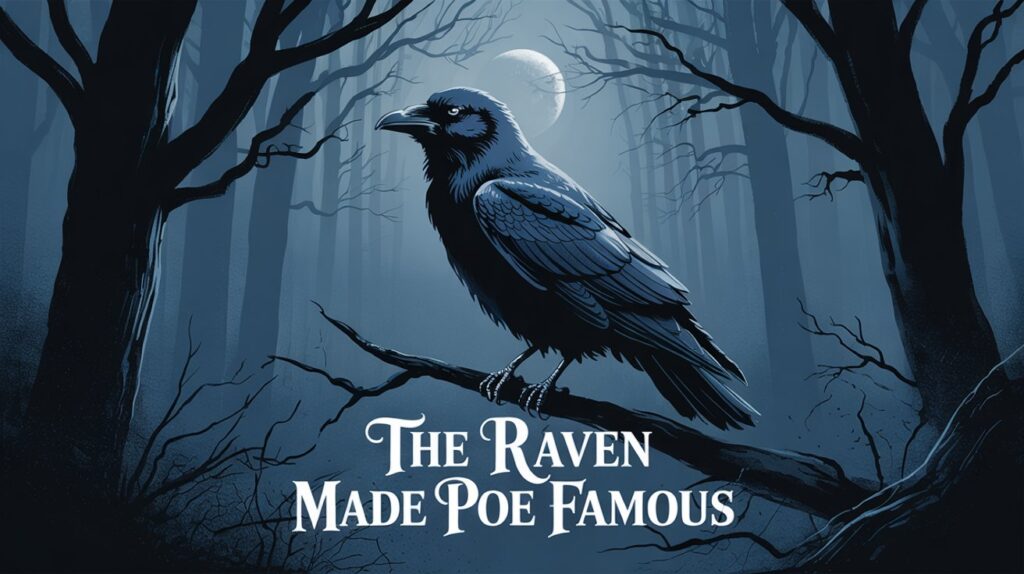
The work of Edgar Allan Poe, named The Raven, made this bird the poster bird for this genre, with its gloomy tone and mournful structure. So came the raven as a figure of death, for “Nevermore!” at the end of each verse.
Poe’s own tragedies and misfortunes in life are well reflected in his poems. From that, the raven of the poem has rather become associated with death and despair. Keeping an enigmatic impression about them has made things more complicated. Poe’s haunting words do keep them in the fore.
Biblical References on Ravens
The scriptures talk about ravens only a few times. In the Book of Genesis, the scene is one where Noah sent forth a raven to find land when the ark landed. The raven did not return; only the dove subsequently came back.
Again, in 1 Kings, God sent ravens to feed the prophet Elijah. Quite often, they signify God’s provision and His mighty unknown ways.
At some places in verses, they are thus compared in relation to doves: purity vs. mere survival. Unlike their black reputation, God employs them for His use in the scriptures.
Raven Animal Symbolism
Ravens stand for wisdom, change, and mystery. They are often said to be messengers between worlds by various cultures. Dark plumage and haunting calls reinforce the mysterious nature surrounding them.
To some, they are omens for death, while some think they have wit in them. More noise mimicking and intelligence in solving problems for them. Ravens hence occupy a strong position in symbolism as tricksters and beings of guidance. They are the most mesmerizing birds in mythologies.
Raven Symbolism and Meaning
Ravens have always possessed several symbolic interpretations throughout history and, to quite an extent, change, secrets, and hidden knowledge can be integrated in those meanings. A number of cultures look upon them as solitary messengers.
A few cultures regard them as keepers of wisdom; others, however, may regard their cunning and intellect with respect for insight. While other myths portray them as jokers who trick their fate, any way one sees it, ravens have been endowed with potent symbolism.
The videos that you might like
To find out more significance and myths of ravens, our newest video presents some shamans’ insights and study. From ancient myth to true-blue intelligence, we’ve got it covered.
Tune in to different societies’ views of these amazing birds as they solve problems and exhibit some astounding behavior. Find out more about the stories that gained them their bizarre reputation! Insight upon insight!
Raven Native American Symbolism
Almost all Native American groups view the raven as sacred. Some call it The Creator, setting the world’s creation in the olden days. Others see it as the trickster, forever pulling pranks. For some groups, it was the one that stole the sun or fire to bring light into the world.
Ravens, in those stories, stand for transformation, for their cleverness and adaptability. They often appear as messengers between the physical and spiritual realms. Hence, the contribution of the Raven in the Native American mythology is vast and complex.
Raven: A Christian Symbol
Christianity reserves a specialized place for ravens in its theology. Ravens are considered to provide life and means for survival. The Bible talks about how ravens brought food for Elijah as a record of God’s providence; ravens are also put in contrast with doves, the symbol of yet another spirit.
Some early Christian interpretations saw them as emblems of repentance. The color of their feathers is mostly associated with sin or loneliness. Be that as it may, they are equally a strong metaphor for the inscrutable path of God.
Raven Celtic Symbolism
Celtic mythology spoke of ravens as harbingers of war, prophecy, and the Otherworld. They actually have their own goddess who takes the form of battle raven: the Morrigan. It was said that before going to battle, the warriors believed it was a good sign to see one on their way.
The legends say that it was the raven who led courageous dead soldiers into the afterlife. Their uncanny ability to locate and scavenge on battlefields only made the ascription of their association with war stronger.
They were the keepers of wisdom very much old. In the Celtic world, ravens were put in the category of creatures that were respected but also feared.
Raven in Dreams
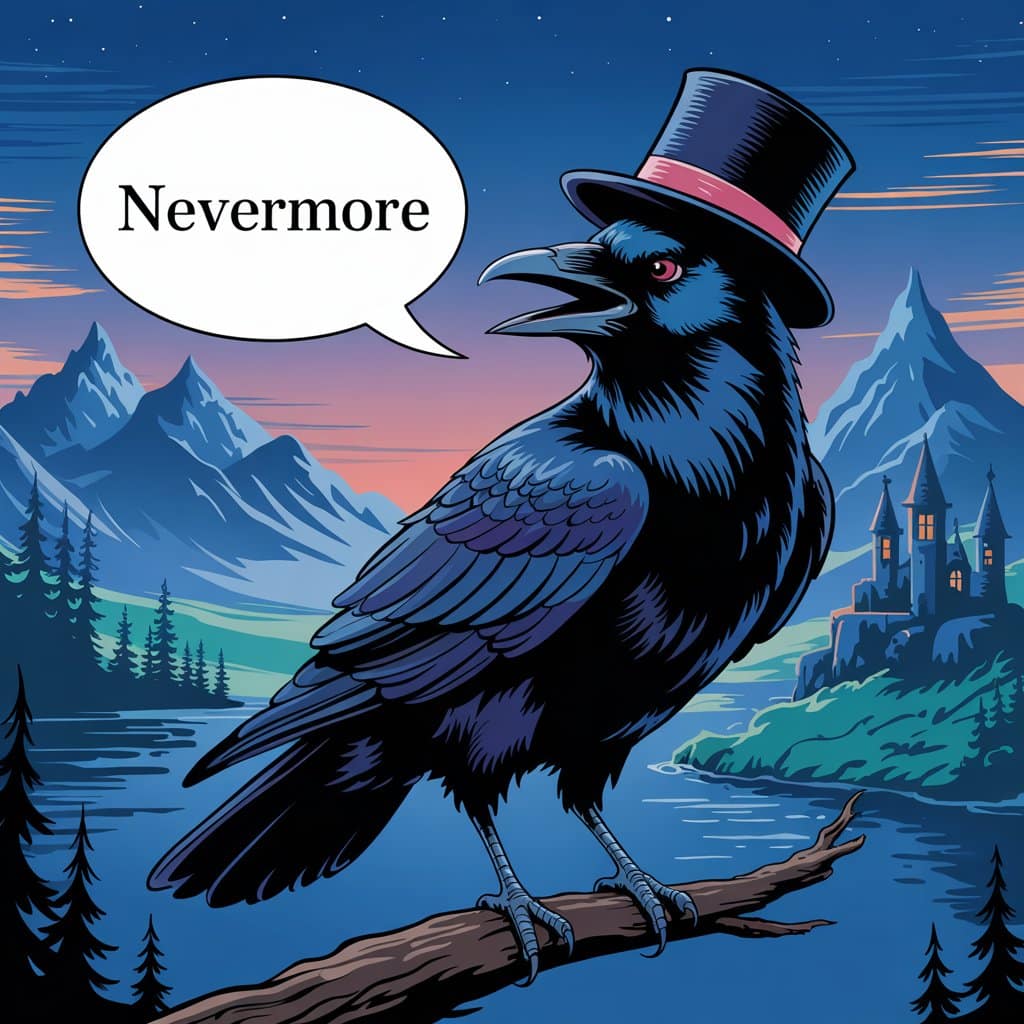
Dreaming about a raven can mean many different things. Some believe that it could be an omen for a change or transformation in life. Some people will define it as an indication of hidden truths. A talking raven in a dream can give a great message.
A violent raven in the dream can mean that you have an internal fight in you. A peaceful raven would mean wise and protective. Your emotional response in the dream can identify its actual meaning.
Raven Encounters and Omens
Almost all cultures regard encounters with ravens as omens. Crossing a raven in your path would mean a change to come in your life. Alone, some interpret it as being lonely or having experienced loss. Others believe that many ravens bring news or advice.
In some cultures, they are messengers from the dead. Some are feared for their presence, but others view them as guardians. The interpretation tends to be based on individual belief and situation.
Raven Mythology and Folklore
Ravens are to be found in myths and legends from everywhere. Norse god Odin had two ravens, Hughes and Muninn, who brought him knowledge. In Greek mythology, they were white but became black because of betrayal.
In several Asian mythologies, they are divine messengers. Indigenous peoples in many parts of the world regard it as endowed with magical powers. Its portrayal in mythologies usually reflects wisdom and mystery. Such birds are a puzzle to the human mind for centuries.
Raven icon
The raven as the icon is the symbol of cleverness and perceptiveness. One can elevate beyond deception to reveal things hidden within. It leads people to search for deeper awareness, presence, and change.
The adjustment and creativity with which life meets predicaments are inspired by ravens. Often, it invites changes and mysteries to people. It suggests that we heed our inner judgment. Ravens as spirit guides turn into insight and strength.
Raven Totem Animal
These are very symbolic of magic, intelligence, and change. People who identify with this totem are resourceful and adaptive individuals.
They are a very deep-reaching, probing kind of person who finds meaning in life in a greater or deeper order than that shown to the average person through their mundane activities. The raven teaches one about observation and intuition.
They guide people through life’s transitions and new beginnings. With this totem, people learn how to accept both shadow and light. Raven wisdom guides people on the spiritual path.
Raven Power Animal
As a strong and perceptive power animal, the raven helps people destroy illusions to see reality. Those who call upon the raven are people who wish to change their lives, transform them, and make an effort to achieve wisdom.
The bird takes them through the trauma of initiation to light. It represents the ability to find one’s way under life’s secrets. According to the raven, people’s confidence to believe more in their own intuition has been set up. As its presence, magic along with wisdom is revealed.
Raven Tattoo Meaning
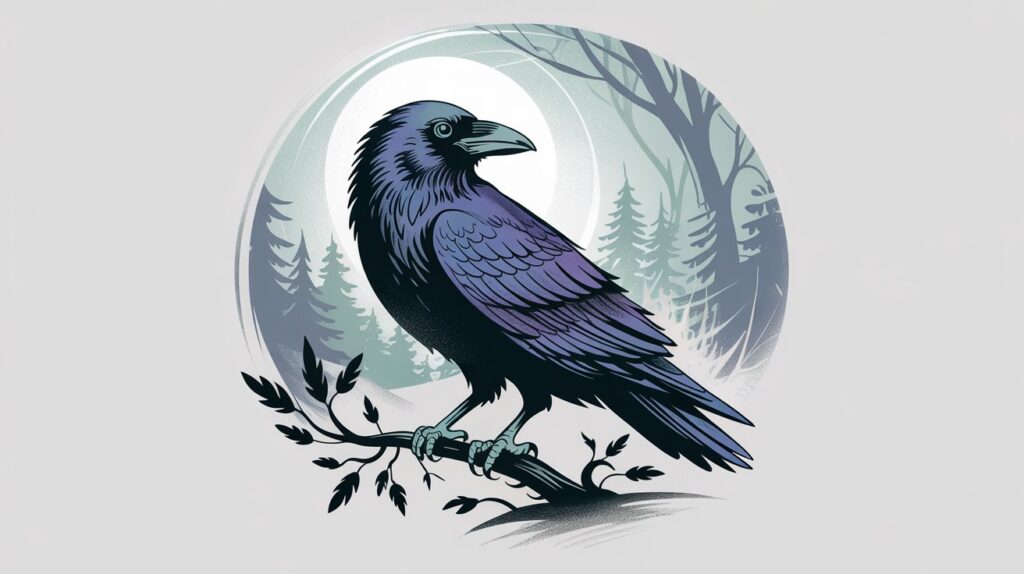
Raven tattoos are very meaningful and varied. They typically symbolize wisdom, change, and mystery. Some people get them to depict life changes or spiritual awakenings.
Others get them to reflect mythology and folklore. A skull and a raven could probably mean life and death. Coupled with a key, it means unlocking mysteries. Whatever design, a raven tattoo is imbued with strong symbolism.
FAQ’S
What do ravens represent in various cultures?
Ravens represent wisdom, change, and enigma. They are viewed as messengers or tricksters by many cultures.
Are ravens an ill omen?
Some think that ravens foretell death or bad luck. Others consider them guardians and guides.
Why are ravens linked with wisdom?
Their ability to solve problems and remember makes them a representation of intelligence. Even myths associate them with knowledge and prophecy.
Do ravens have spiritual significance?
Yes, some believe they’re spirit animals that direct personal development and intuition. They symbolize profound understanding and mystery..
Why are ravens significant in mythology?
They occur in myths all over the world as messengers, tricksters, or war tokens. Their brains and haunting appearance make them unforgettably memorable.
Conclusion
Ravens are more than dark, enigmatic birds. Their intelligence, versatility, and ancient symbolism make them compelling animals. In cultures around the world, they symbolize wisdom, change, and even the supernatural. From biblical tales to Norse mythology, ravens have a strong presence in myth. Their voice mimicry, face memory, and even gesture use demonstrate their genius. Whether tricksters, messengers, or omens, these birds never cease to fascinate. Learning about Raven Animal Symbolism and Fun Facts shows us just how amazing they really are.

Mark Down is a seasoned blogger with a passion for exploring spirituality, symbolism, and personal growth. With years of experience, Mark combines insightful research and engaging writing to guide readers on their spiritual journeys. His expertise in decoding life’s mysteries shines through in his thoughtful articles, making complex topics accessible and meaningful.

